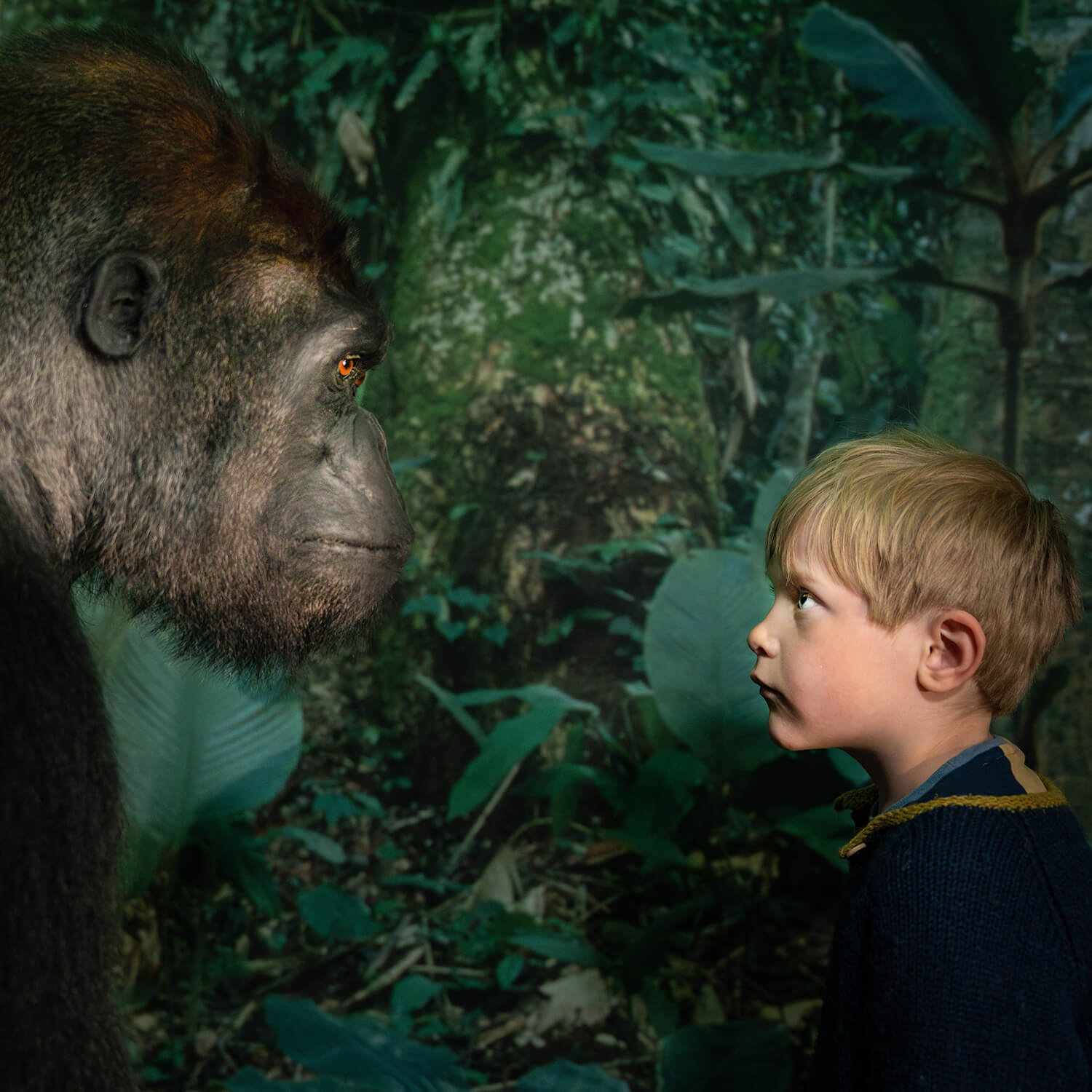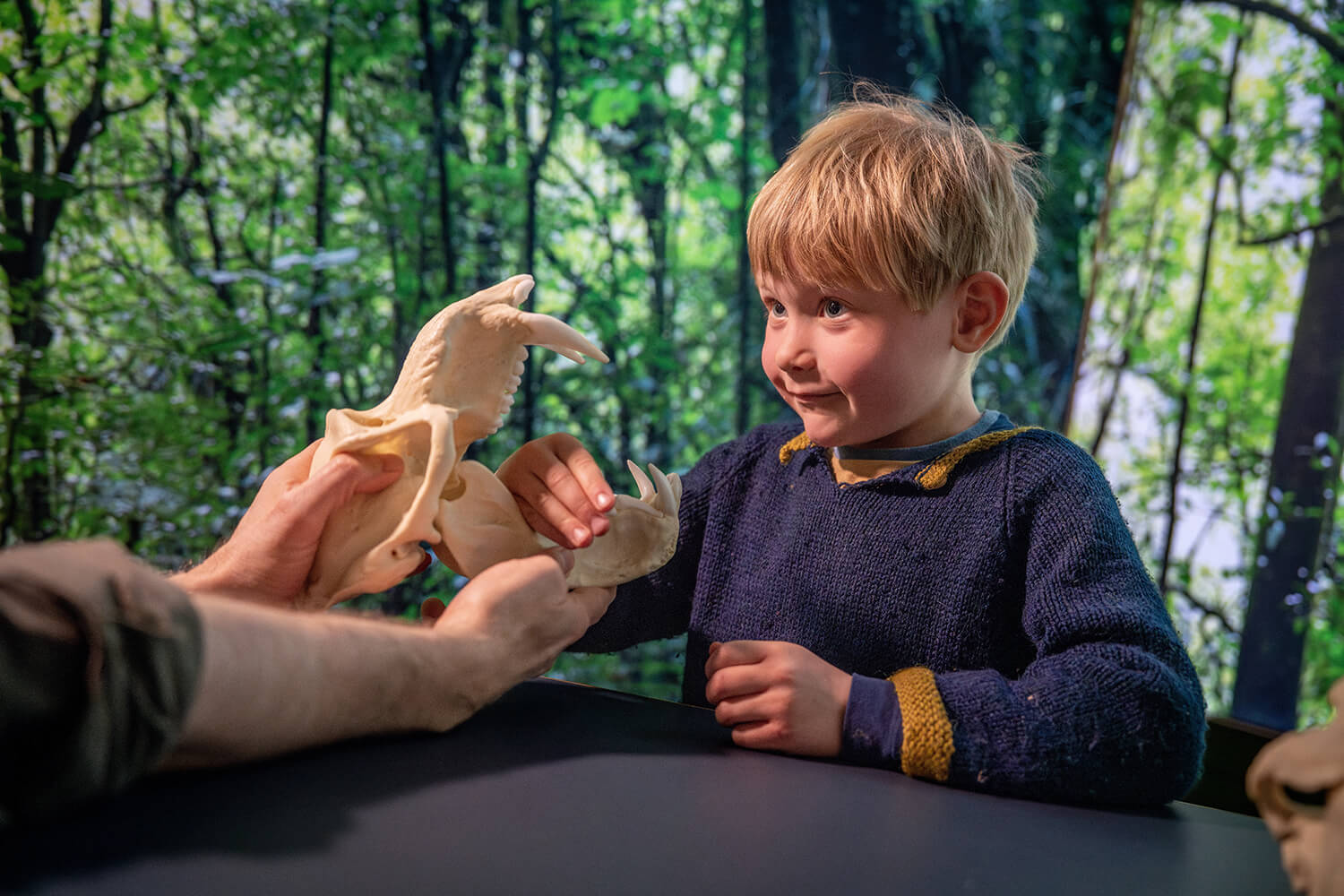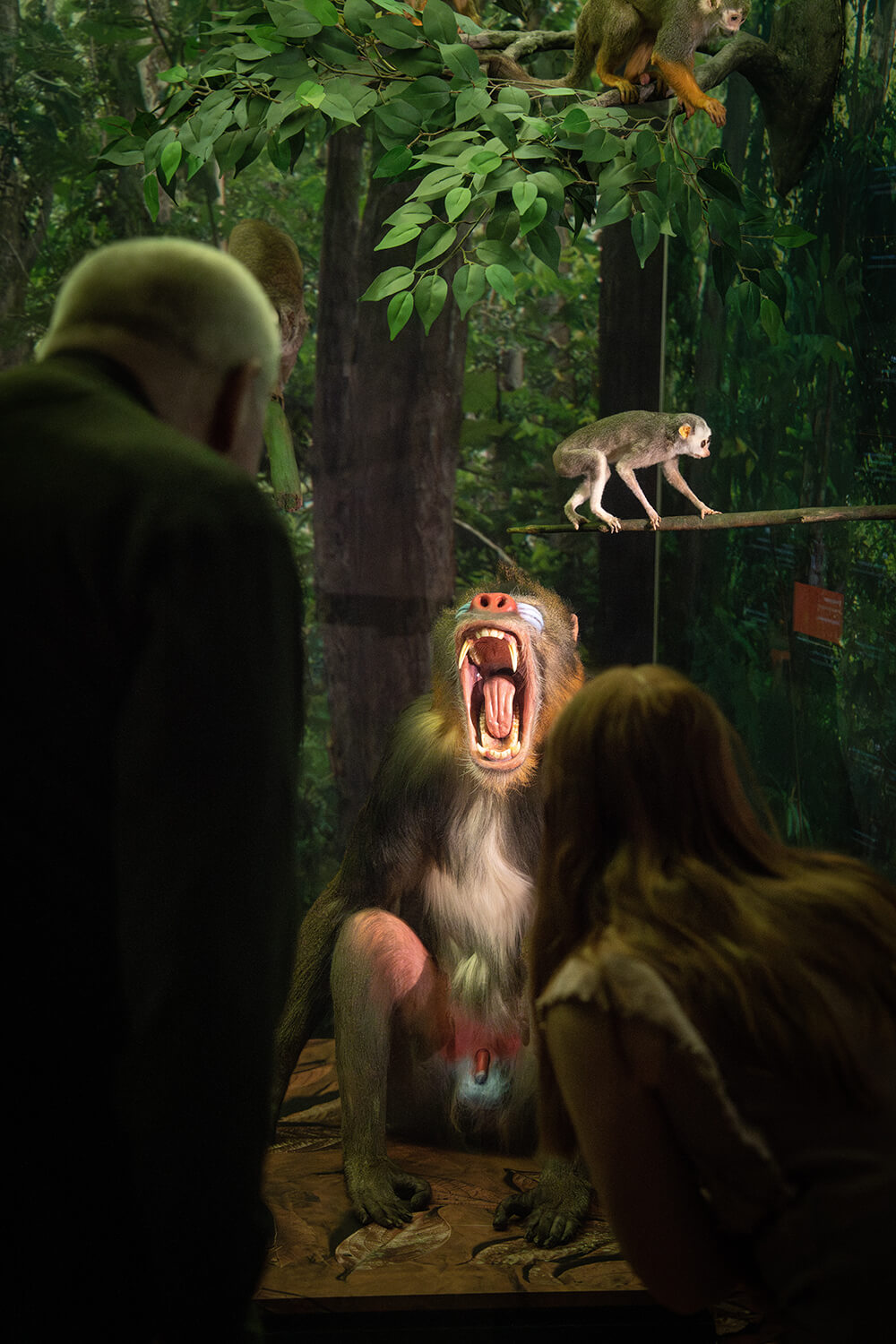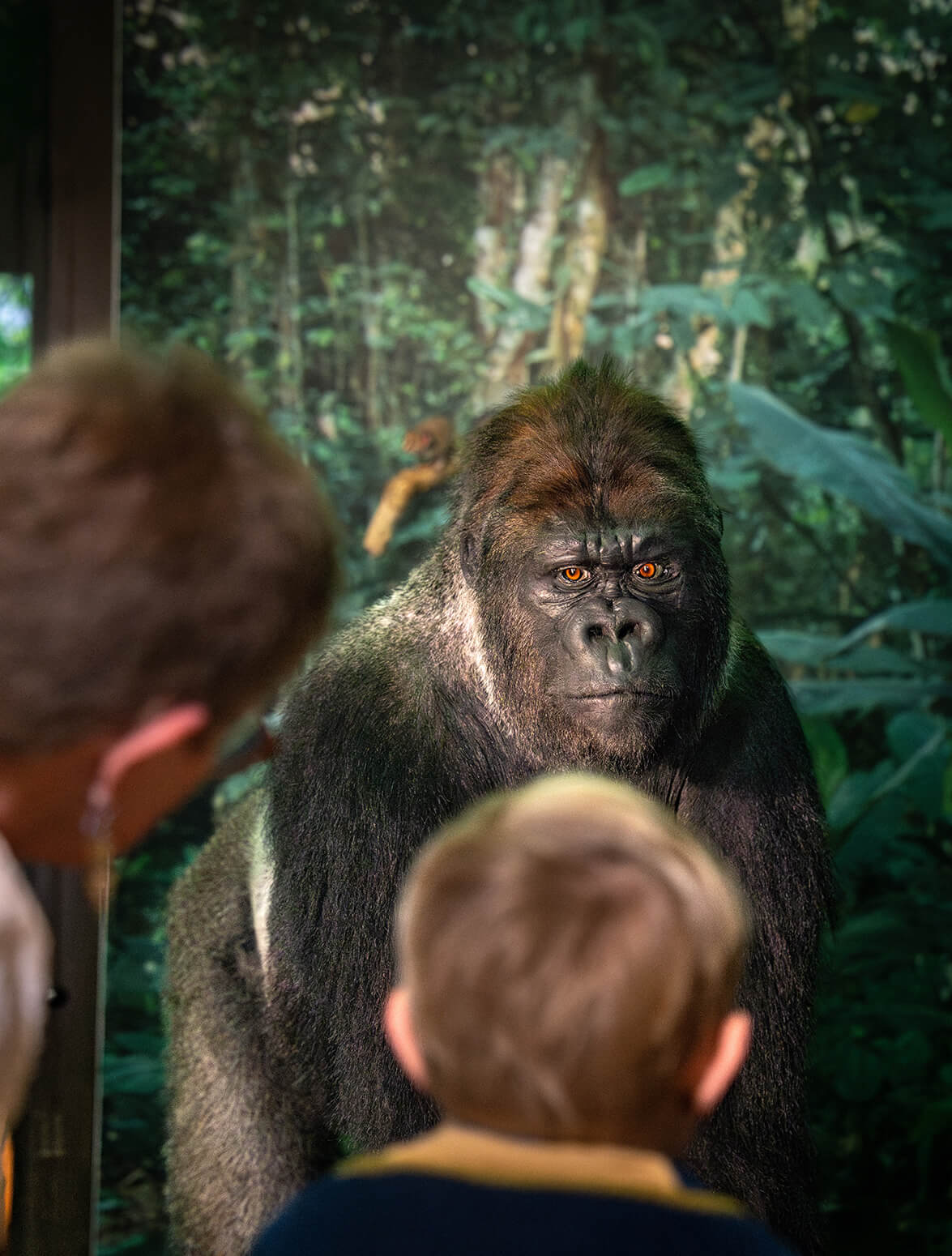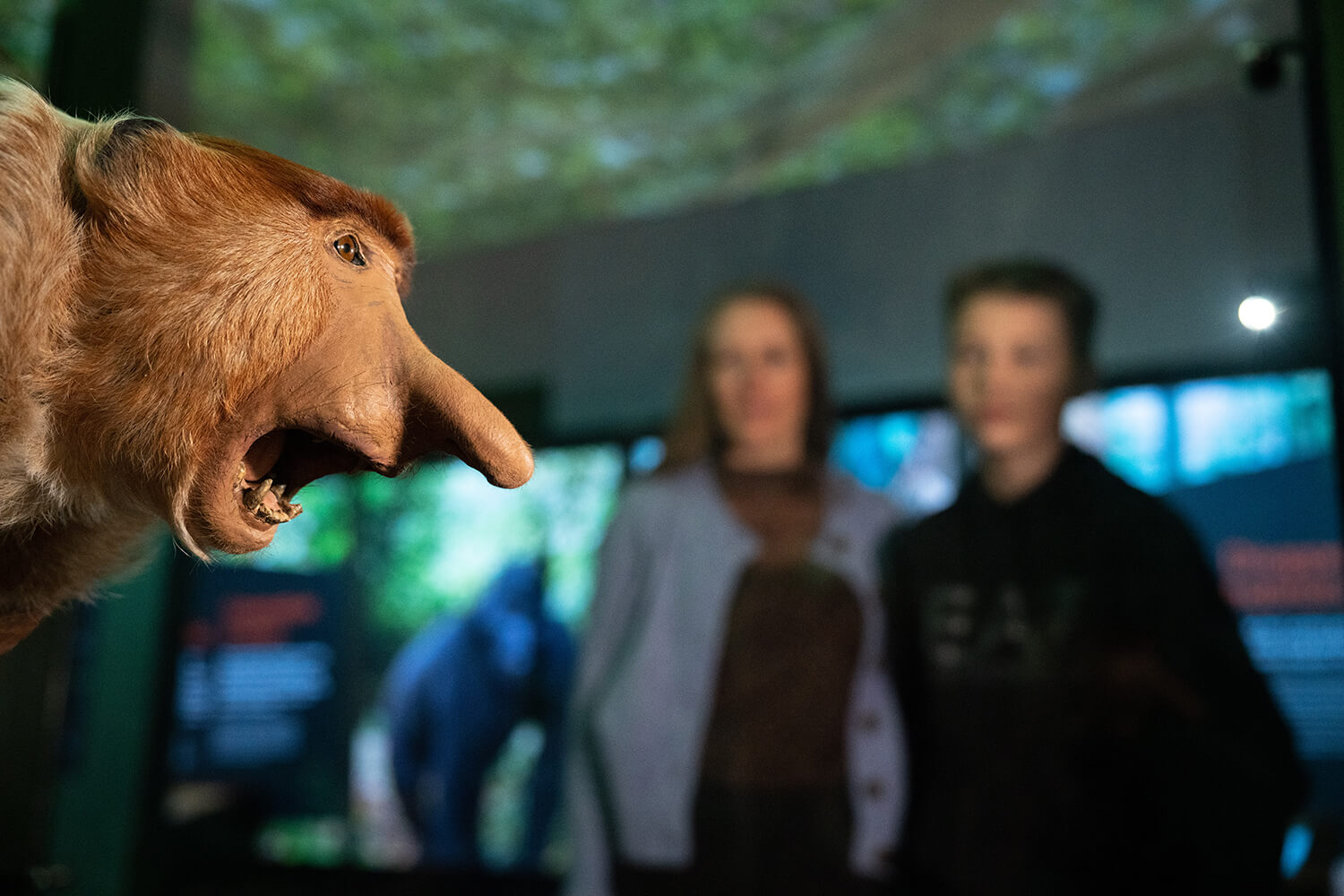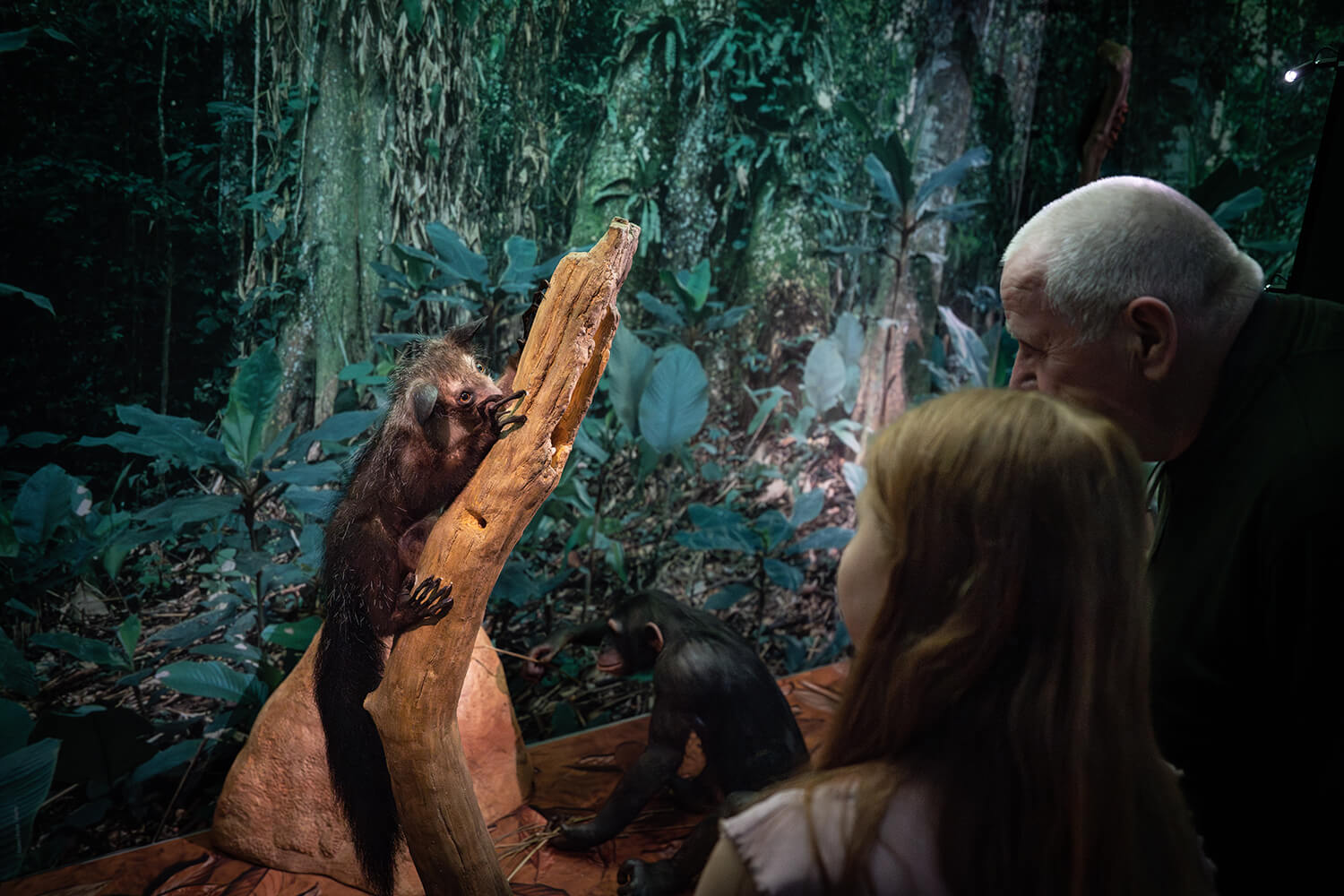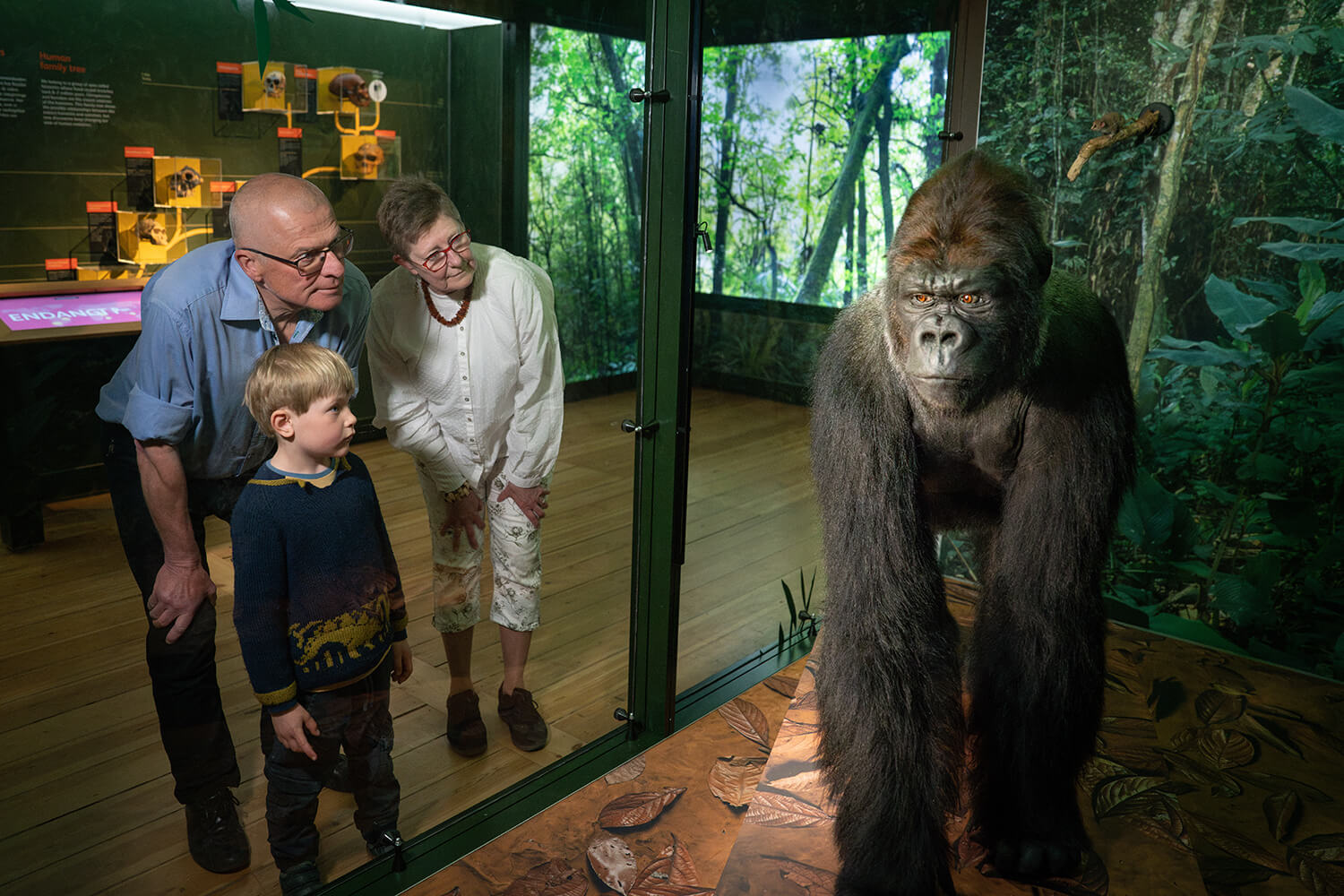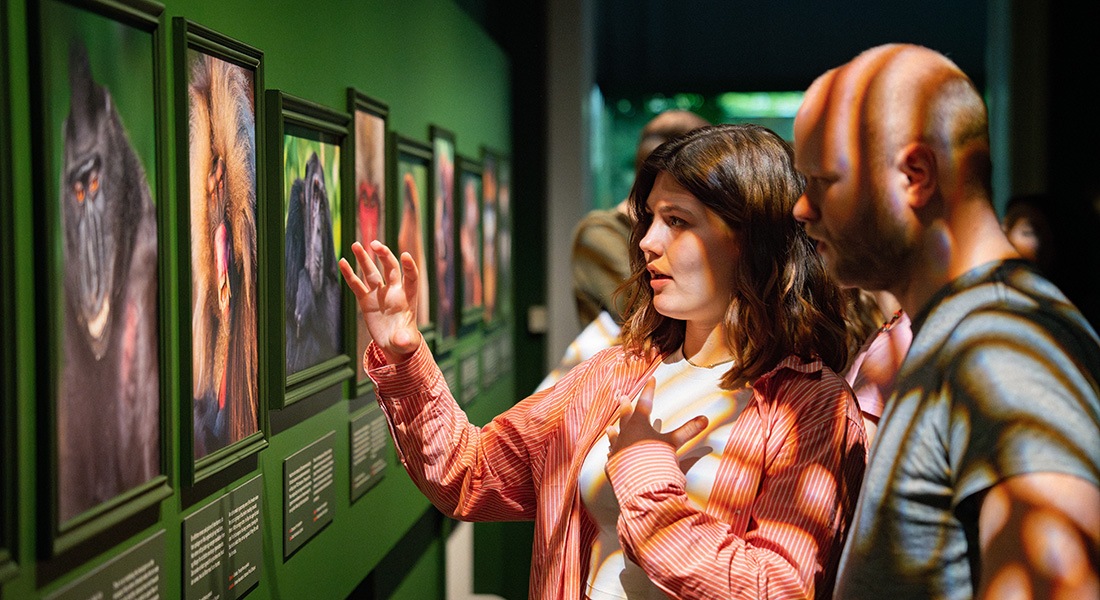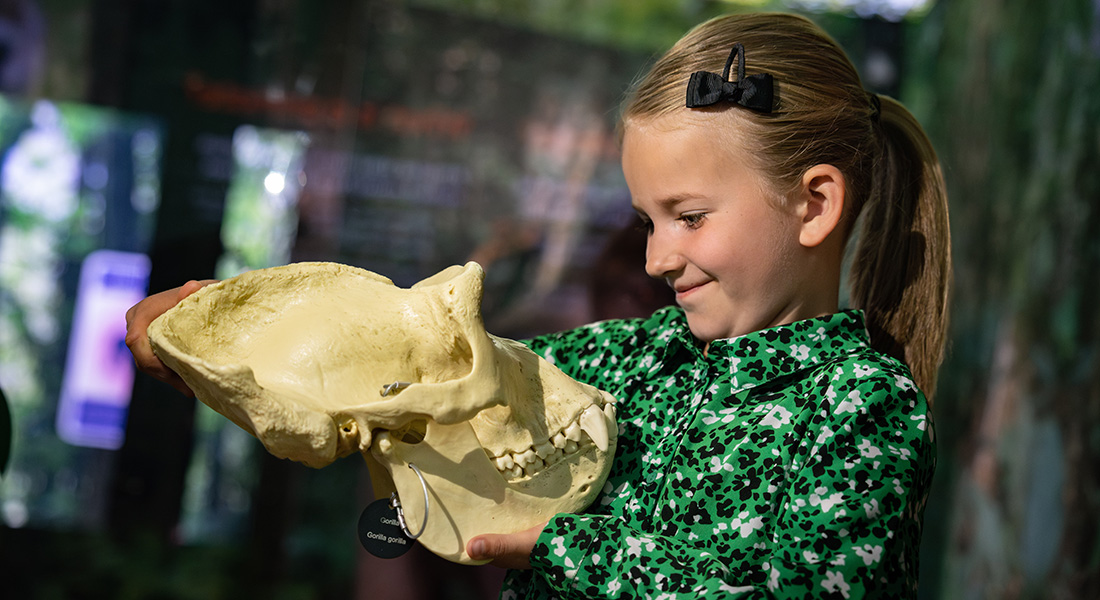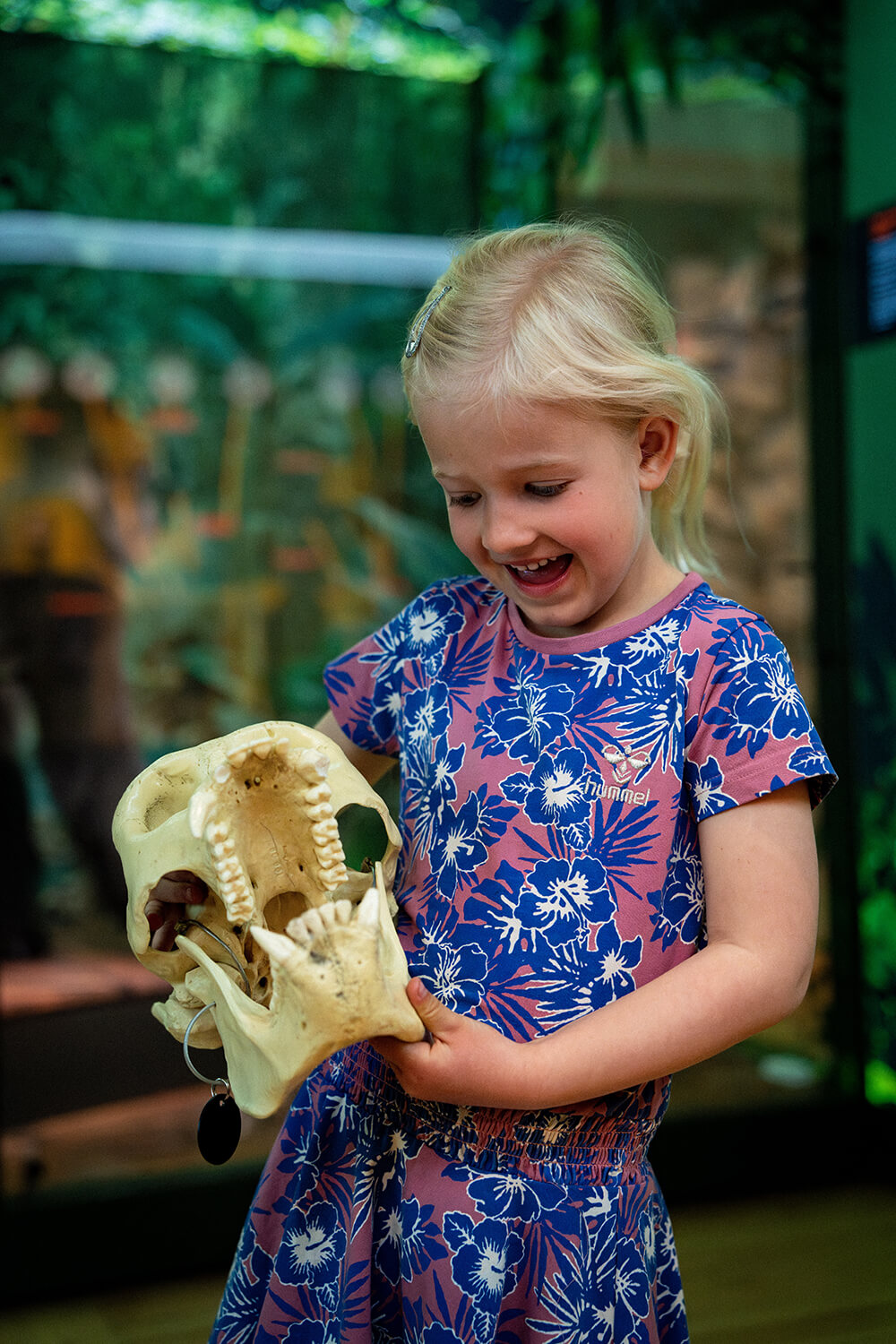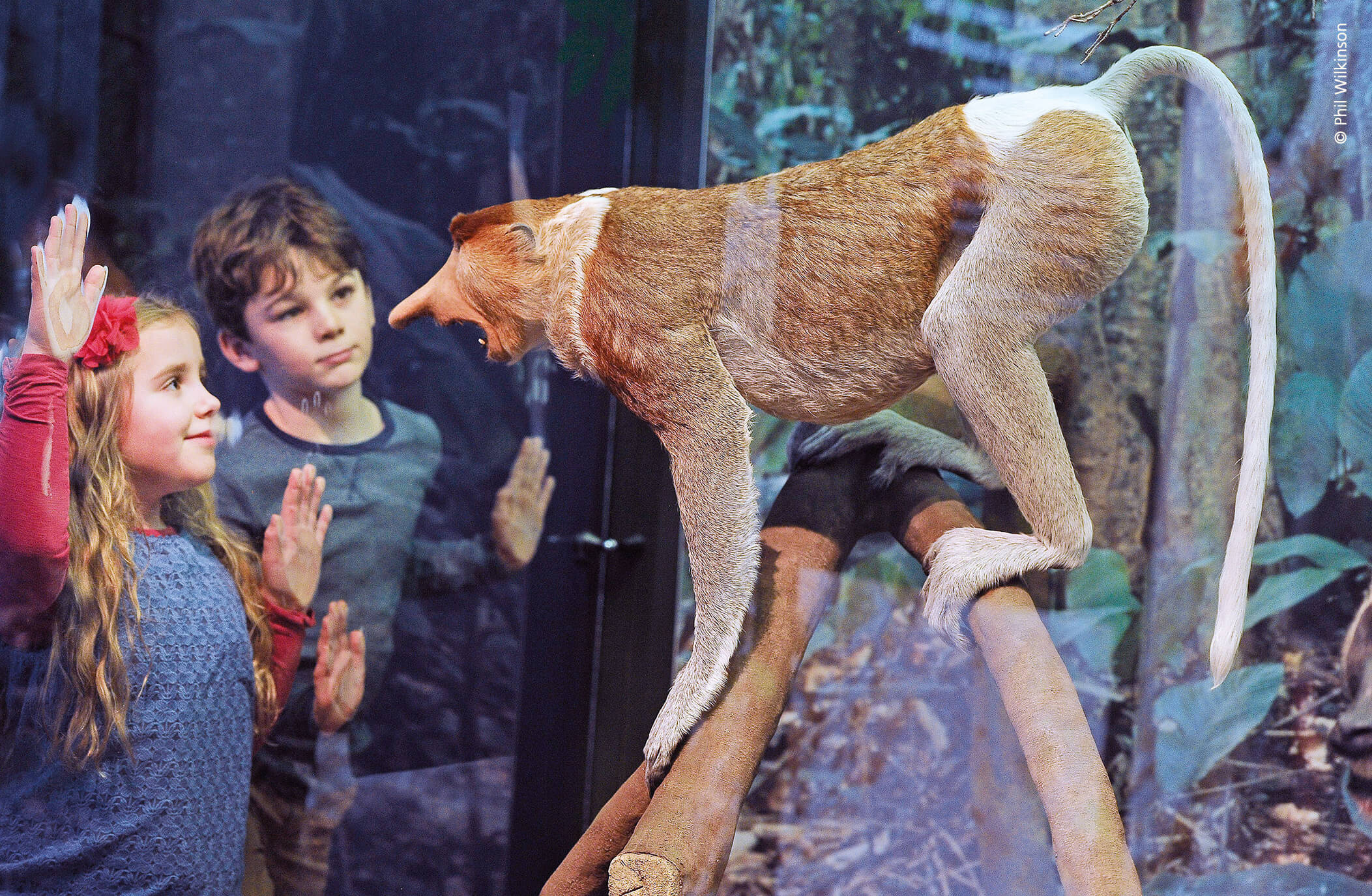Sneak peak at the exhibition Monkeys – A Primate Story
In the exhibition you meet more than 60 different apes and monkeys and get a fascinating insight into the world of primates. Below we give you a sneak peek at the exhibition.
'Monkeys – A Primate Story' is exhibited at the Natural History Museum of Denmark from 17 May 2023 to 25 February 2024.
Enjoy.
Contact
Bent Bøkman
Press Officer
Natural History Museum of Denmark
Copenhagen University
Phone: (+45) 53 83 30 41
Mail: bent.boekman@snm.ku.dk
Guidelines for use of photos
Photos on this page may only be used in connection with press coverage of the exhibition 'Monkeys - A primate story' at the Natural History Museum of Denmark.
The images are available for download in a web-friendly resolution for digital use only. Please click each image to download.
For high-resolution images for print, please contact our press officer Bent Bøkman.
The portraits of the monkeys should not be cropped or altered. Sensitive cropping is permitted with permission from the photographer Mogens Trolle.
PHOTO CREDIT IS REQUIRED. The credit information can be found in the image descriptions.
Copyright must be clearly attributed to the photographer.
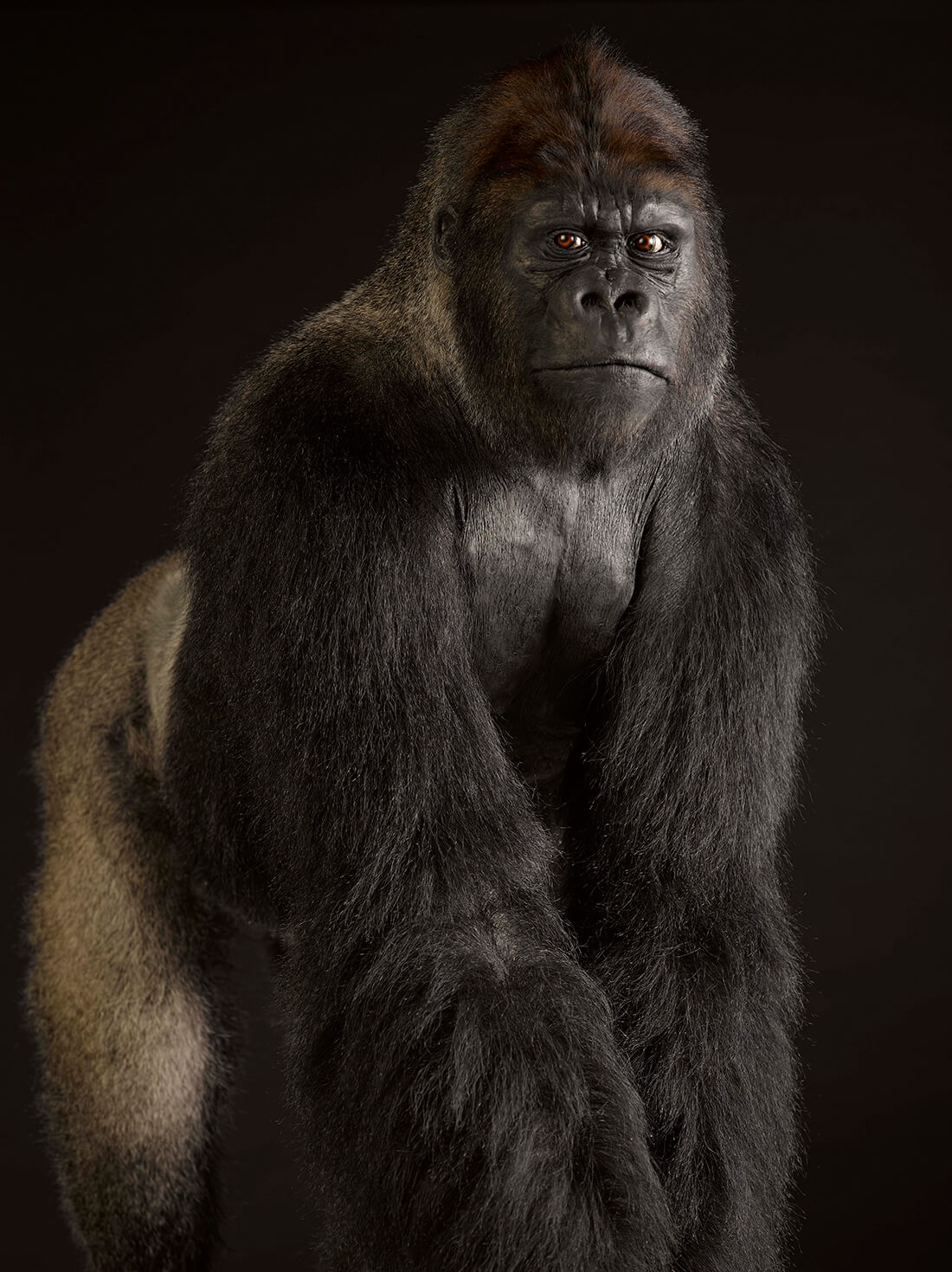
Western lowland gorilla in the exhibition 'Monkeys - A primate story’ © National Museums Scotland
IUCN Red List: Critically Endangered
Primates come in many shapes and sizes – from the tiny Madame Berthe’s mouse lemur, weighing just 30 grams, to the huge eastern gorilla, with males weighing up to 220 kilograms – 7,300 times bigger!
Most primates are small. The average weight of wet-nosed prosimians is only half a kilogram, while for dry-nosed anthropoids it is 5 kilograms.
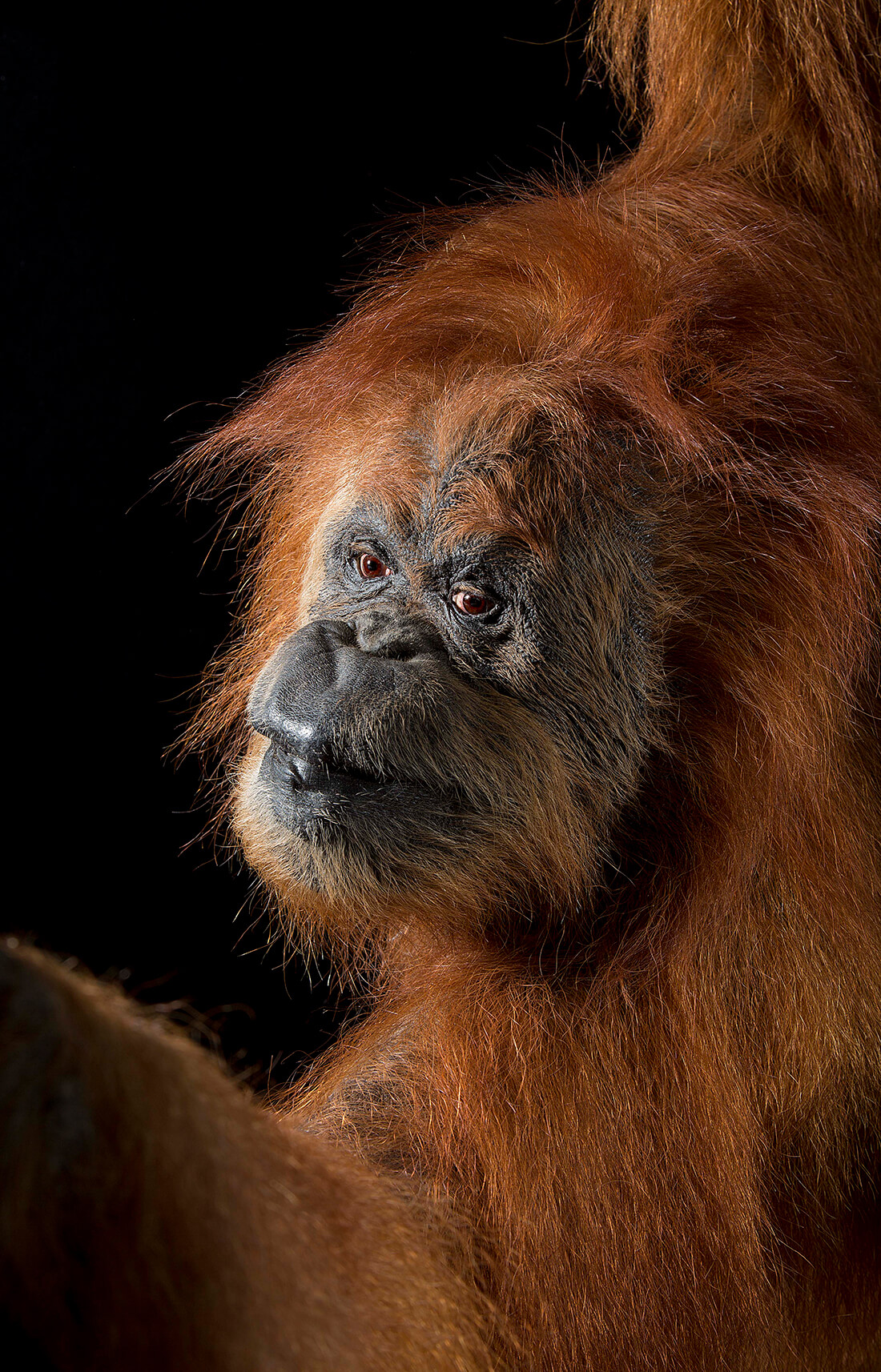
Sumatran orangutan in the exhibition 'Monkeys - A primate story' © National Museums Scotland
IUCN Red List: Critically Endangered
The Sumatran orangutan is one of the most endangered primates in the world. The population has declined by 80% in 75 years to 14,600 individuals in 2016.
They are threatened by forest loss, caused by logging, agriculture (mostly oil palm plantations) and roads. They are also trapped for the pet trade and killed if they are caught raiding crops.
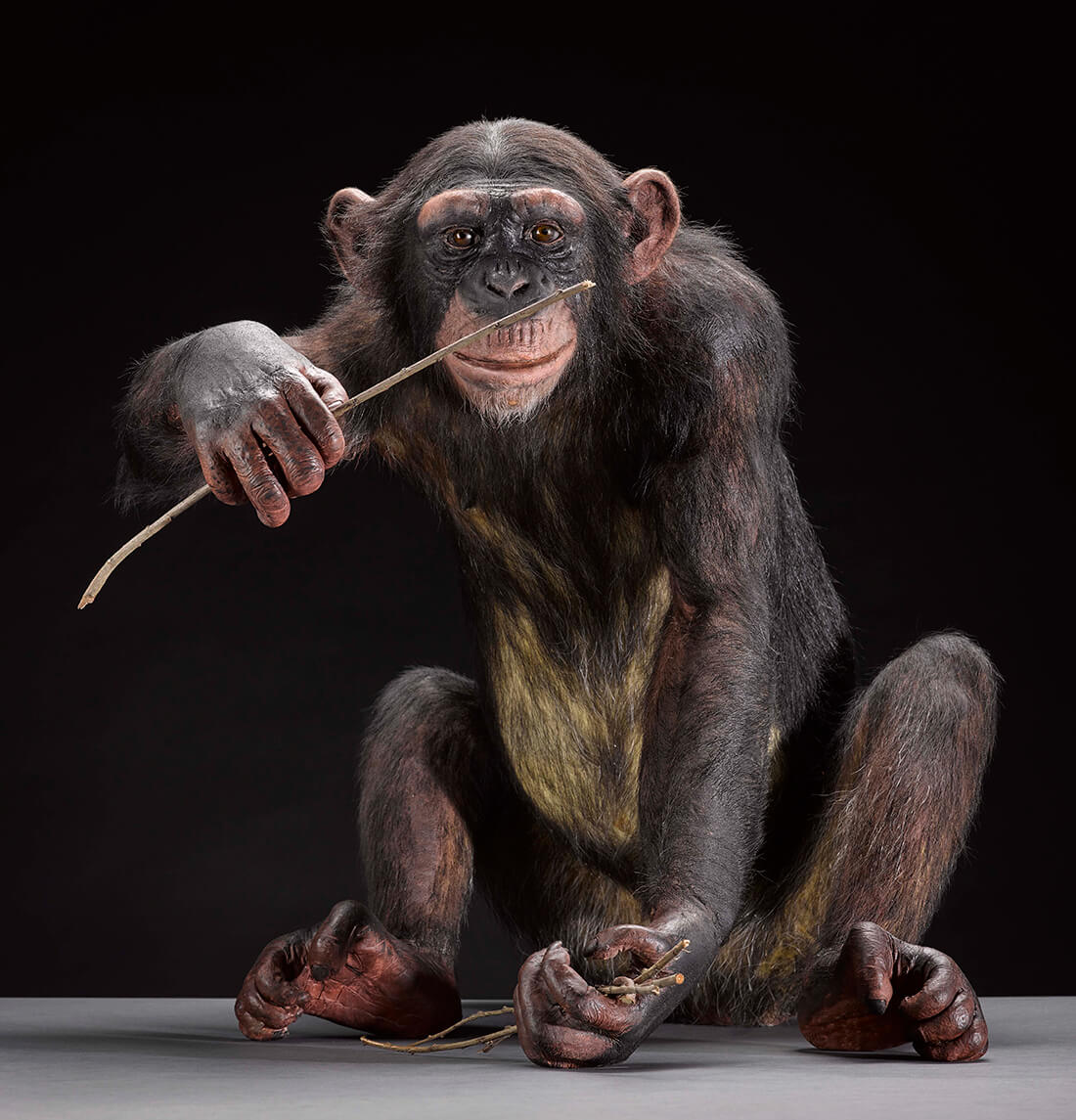
Chimpanzee in the exhibition 'Monkeys - A primate story' © National Museums Scotland
IUCN Red List: Endangered
Humans are not the only primate to use and make tools. Chimpanzees and some capuchin monkeys use and modify rocks to crack open nuts and seeds. Chimpanzees also use and make many other tools for different specialised tasks, including fishing for termites in their mounds with grass stems and using leaves as sponges to get drinking water from nooks in trees.
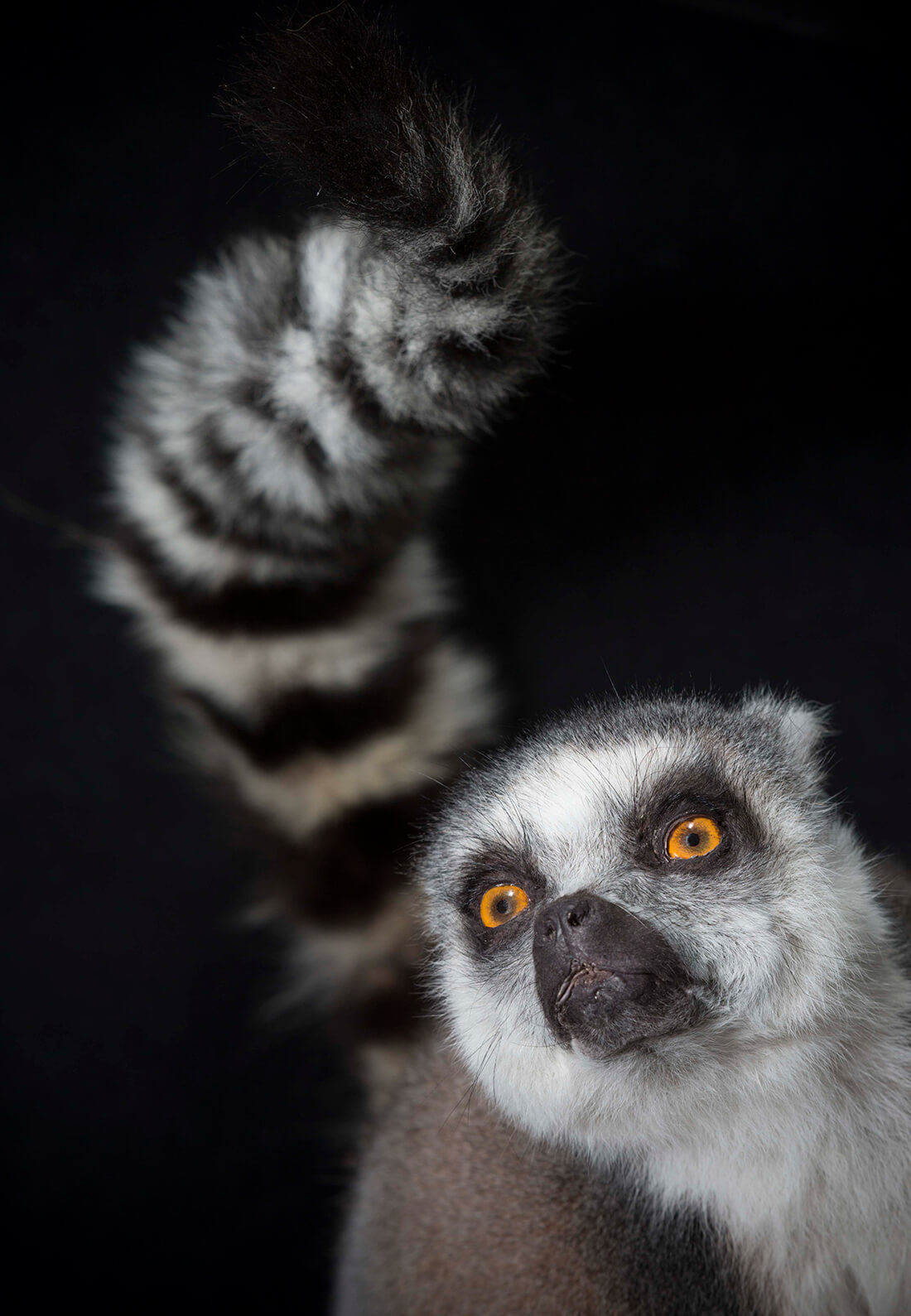
Ring-tailed lemur in the exhibition 'Monkeys - A primate story' © National Museums Scotland
IUCN Red List: Endangered
Some primates use scent as a main way to communicate. Ring-tailed lemurs defend their territory against neighbouring groups by using scents. Males give their stripy tails a distinctive scent by rubbing them against large wrist glands. They take part in stink fights – wafting their smelly tails at rivals.
Humans also use smells to communicate, using scents produced by sweat and other glands. Our sense of smell is better developed than that of many of our closest relatives.
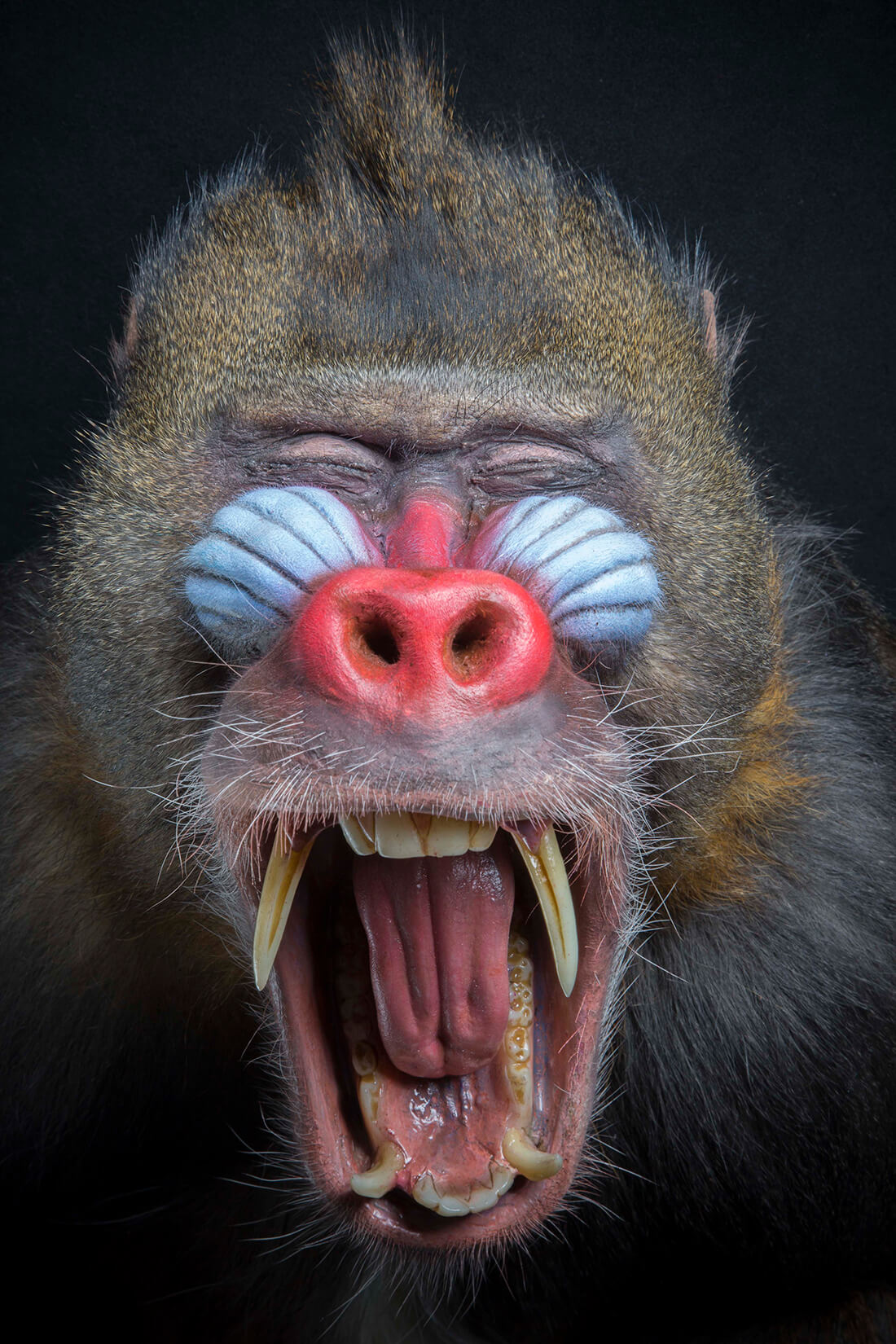
Mandrill in the exhibition 'Monkeys - A primate story' © National Museums Scotland
IUCN Red List: Vulnerable
Many primates have brightly coloured faces and bottoms that can change colour. In males, bright colours reflect their status; in females they signal whether they are ready to mate.
Male mandrills stand out from the crowd with a blue-and-red face and a blue, red or purple bottom. It is an important way to communicate with the group.
Yawning at rivals shows off their large canine teeth. Male mandrills with teeth shorter than 3 centimetres are ignored by females and don’t get the chance to mate.

